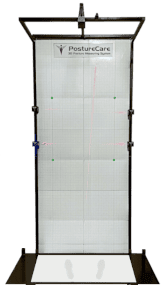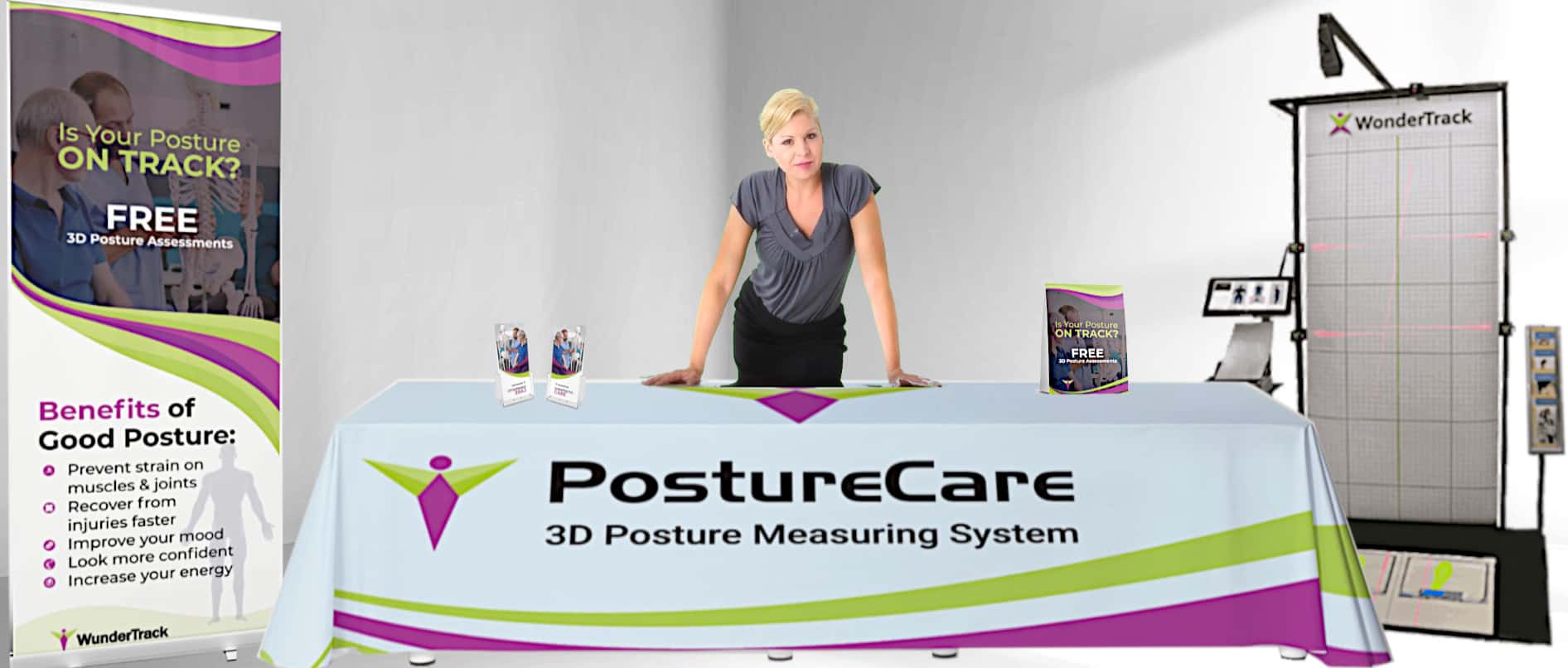6 Factors to Consider When Choosing a Posture Assessment Device

Morihei Ueshiba, Japanese martial artist and founder of Aikido, once said that “a good stance and posture reflect a proper state of mind.” Research further reveals that engaging in proper posture practices also contributes to reduced levels of pain and lower injury risk, ultimately improving overall health.
While a patient’s posture can be assessed by performing a physical exam, a variety of devices have been created to assist with this process. If you’re considering the purchase of one for your chiropractic practice, here are six factors to consider first.
#1: Accuracy
As a healthcare provider, you are only as good as your ability to diagnose. Therefore, the more accurate your posture assessment device is at pinpointing problem areas, the better your ability to create an effective treatment plan.
For a device to be considered accurate, it must be measurable. Put another way, it needs to provide solid data during the assessment. For instance, if the device is designed to assess imbalances within the pelvis, it should be able to tell you the weight distribution on each side of the body, the alignment of the hips, and/or the vertical alignment of the spine.
These findings should also be reproducible, whether on that device or as proven by some other postural assessment device. If you can’t rely on the data, it’s going to be difficult to identify the issue with enough confidence to suggest a plan for treating it.
The sensitivity of the device is also important for accuracy. It must find slight changes in posture for accurate prognosis and accurate treatment plans.
#2: Privacy
Studies show that taking action to protect your patients’ privacy helps improve doctor-patient communication. It does this by making them feel more comfortable with sharing private information. On a societal level, this also assists with the collection and reporting of reliable data that can be used to help enhance public health.
One way to provide this level of privacy is to select a posture assessment device capable of providing depersonalized reports. Specifically, reports without images of the patient make patients feel more comfortable and decrease the risk of erroneously disclosing their information. Information that cannot be removed should be capable of being encrypted or put in secured storage.
Protecting a patient’s privacy also involves using a device that doesn’t require that they wear special attire, like a gown or skin-hugging clothes like spandex. The more you can minimize the patient’s exposure; the less uncomfortable patient will feel, and the less risk of exposing their health information.
#3: Mobility
Another factor to consider is whether the device is easy to assemble, has a compact design, and is light in weight. A device with these three qualities enables you to move it easily from one exam room to the next. It also reduces the amount of space necessary to store it when it is not in use.
Choosing this type of device can also potentially reduce your risk of getting hurt as the Occupational Safety & Health Administration (OSHA) explains that “ergonomic stressors such as force, repetition, [and] awkward postures” can increase a healthcare provider’s susceptibility to injury and pain. Light, compact devices can reduce this stress for you and your staff.
More importantly for new graduates, a compact, portable design makes it easy to bring to shows. One of the best ways to promote chiropractic is to educate the public on their structural health. The right posture assessment tool will help you connect with your visitors who may be unaware of how posture is affecting their symptoms.
#4: Dependability
The last thing you want is to purchase a posture assessment device that malfunctions and you’re unable to get it fixed or replaced. That’s why it’s important to, first, choose a company that has been around for a long period of time. A company with a solid track record of looking after their customers. A company that stands by their product with an iron-clad warranty.
That said, even the best company can produce and sell a product that, for whatever reason, doesn’t do what it should. This is where a 30-day return policy and 10-year warranty can be helpful, providing solutions in both the short and long term.
#5: Efficiency
Ideally, your posture assessment device should be capable of fully integrating with your electronic health record (EHR). This allows you to seamlessly and effortlessly add the data collected directly to the patient’s file.
An efficient device is also easy to operate, reducing the learning curve. It should be able to provide reports quickly, enabling you to identify any problem areas on the spot so you don’t have to send your patients home without answers and risk that they won’t come back.
#6: Cost
Finally, before purchasing a device to help you better assess your patients’ postural issues, you must consider the cost. Is the device affordable? Does it fit within your budget?
If your answer is no, does the seller offer to finance? Spreading payments out over time makes it possible to get the device without worrying about what it will do to your bank account. Alternatively, do they have any special offers that would decrease the final price?
Part of calculating cost involves determining the device’s return on investment, or ROI. For example, will it save you time when conducting initial assessments, allowing you to see more patients in a day? If yes, it may be worth the expense.
Or maybe the device allows you more accuracy in your diagnosis than the exams you currently offer. This could improve your treatment effects, boosting your practice by being the doctor who “gets results.”
Once you consider these six factors, you’ll be in a better position to decide what type of posture assessment device will be best for you. It also increases the odds that you’ll be happy with that device for years and years to come.















